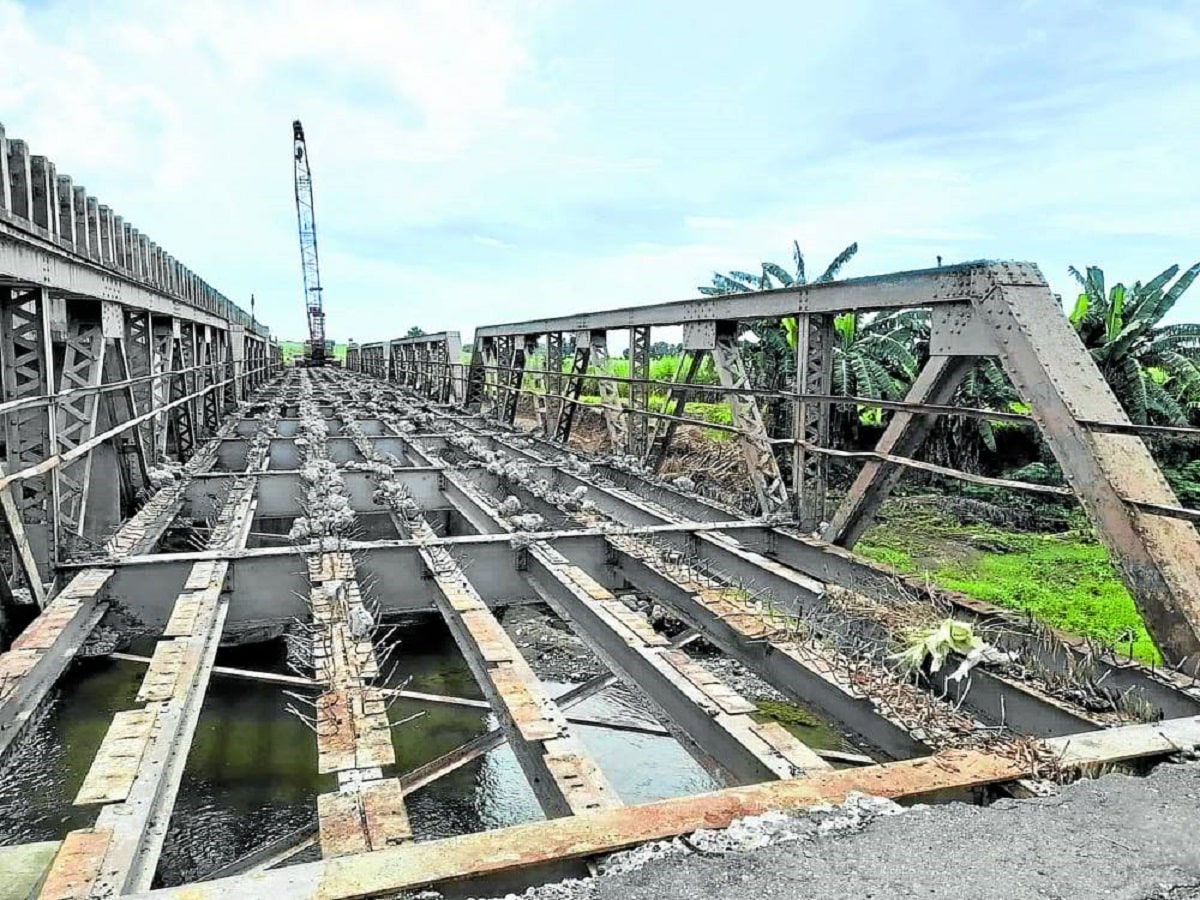
HISTORIC LINK In this photo taken in July 2023, only the steel frame of the Talave Bridge remains as the Department of Public Works and Highways dismantles the 91-year-old structure citing safety reasons. —photo courtesy of Andoni Llantada
BACOLOD CITY, NEGROS OCCIDENTAL, Philippines — It’s a case of too little, too late.
The National Historical Commission of the Philippines (NHCP) on July 16 issued a cease-and-desist order (CDO) to stop the demolition of 91-year-old Talave Bridge that connected Calatrava town to San Carlos City in Negros Occidental. The CDO, however, came after the bridge had already been demolished.
Heritage advocate Andoni Llantada, who has been calling for the structure’s preservation, said the demolition began in July 2023 and was completed this year.
“Now the question is, considering that a CDO has been issued and the Talave Bridge has been demolished, what happens now?” he asked.
READ: Heritage advocate wants 90-year-old Negros Occidental bridge saved
“Should the DPWH (Department of Public Works and Highways) rebuild the bridge back to its original location? Should cases be filed against DPWH and local government leaders who failed in their duty to protect the presumed Important Cultural Property (ICP) from destruction?” he added.
Llantada said the Juan Calatrava Movement, which he chairs, was determined to pursue the fight for Talave Bridge as there was clearly a violation of law committed by the DPWH and the local governments.
“We need to show them the importance of cultural and historical preservation and to prevent events such as these from happening again in the near future,” he said.
No clearance
The 100-meter steel bridge, which crosses the Talave River, was built in 1933 by the United States Steel Products Co., based on the marker installed by the builder at the foot of the structure.
Llantada said the bridge had to be preserved as it played a vital role in the economic development of Calatrava and San Carlos, including the transport of sugarcane from plantations to sugar mills.
NHCP Chair Regalado Trota Jose Jr. informed San Carlos City Mayor Renato Gustilo and Nerie Bueno, assistant secretary of the Department of Public Works (DPWH), of the CDO in a letter on July 16.
Jose said the demolition of the structure without any clearance from the NHCP was a violation of Article 3, Section 5 of Republic Act No. 10066 or the National Cultural Heritage Act of 2009.
He reminded the mayor and the DPWH regional director that the petition to remove the presumption of the Talave Bridge as ICP had not yet been decided upon so no activities within the property should be undertaken.
“In view of this, the NHCP is issuing a cease-and-desist order and hereby enjoins the petitioner to refrain from any work or changes in the area until such time that the NHCP board has convened concerning your petition to remove its presumption,” Jose said in the letter.
Llantada said the issuance of the CDO against the demolition sent “a very strong message that no one is above the law.”
“This reinforces as well our calls since 2023 that what they did was illegal considering there was no NHCP approval,” Llantada said.
The group is studying its legal options now that the NHCP has responded and issued a CDO.
Responsibility
Joe Recalex Alingasa Jr., head of the San Carlos City Disaster Risk Reduction and Management Office, said it was not the San Carlos or Calatrava local governments that dismantled the bridge but the DPWH.
“In fact, [Mayor Gustilo] offered to provide a site for the bridge to be relocated so it could be preserved as a cultural property,” he said.
Sanny Boy Oropel, DPWH Western Visayas regional director, said the dismantling of the bridge already started before he assumed his post last year.
“It was not demolished. It was dismantled,” said Oropel, who was appointed DPWH regional director in August 2023 replacing Bueno.
He said negotiations were held with the NHCP in Manila this year where the DPWH sought clearance to complete the dismantling.
The DPWH, Oropel said, asked the NHCP for its list of declared historical structures but it could not provide any for Talave Bridge.
He said the NHCP told the DPWH to secure a clearance from the local government declaring “no objection” to the demolition.
“The local government of San Carlos gave us the clearance or the certification of no objection that led to the complete dismantling to ensure the safety of the public,” Oropel said.
The dismantled old bridge was downstream of the new two-lane bridge that was constructed beside it. INQDuring flooding, Oropel said the old bridge would be a hazard to the new structure if it was not removed.
“The purpose of the new bridge is to ensure the safety of the commuters as the old one was in danger of collapsing. The new bridge was also needed to meet the increase in traffic in the area,” he said.